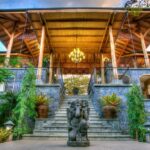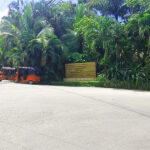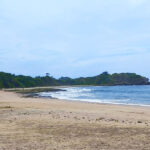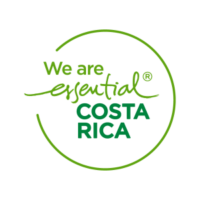Service 24/7/365
info@gypsycabnosara.com
Phone: + (506) 8302-1903
info@gypsycabnosara.com
- About
- Contact
- Publications
- LIR Airport – Nosara
- SJO Airport – Nosara
- Other Services
- My account
- Cart
- About
- Contact
- Publications
- LIR Airport – Nosara
- SJO Airport – Nosara
- Other Services
- My account
- Cart
Costa Rica’s Journey to Independence: A Tapestry of Resilience and Unity

- Introduction
- The Dawn of a New Era
- Setting the Scene: Costa Rica in the Early 19th Century
- The Road to Independence
- The Global Context: Influences and Pressures
- The Central American Independence Movement
- The Signing of the Act of Independence
- Key Figures in the Independence Movement
- José María Castro Madriz: The First President
- Juan Mora Fernández: A Pioneer Leader
- Braulio Carrillo Colina: Architect of the Modern Nation
- Other Notable Figures and Unsung Heroes
- The Celebration of Independence
- Traditional Celebrations: A Blend of History and Culture
- Modern Celebrations: Virtual and In-Person Events
- The Anthem of September 15th
- Lyrics and Significance
- A Deep Dive into the Anthem’s Message
- Post-Bicentennial Costa Rica: A New Chapter
- Reflecting on the Journey: 202 Years of Resilience
- Emerging Trends and Developments: A Glimpse into the Future
- The Role of New Generations in Shaping the Nation’s Path
- The Legacy of Independence: Modern Implications
- Democratic Foundations and Governance
- Education and Cultural Preservation
- Economic Growth and Sustainable Development
- Conclusion
- The Journey So Far and the Road Ahead
- Inviting Reflection: Engaging with Costa Rica’s History
1. Introduction
In the lush landscapes of Central America, nestled between the Pacific Ocean and the Caribbean Sea, lies the vibrant nation of Costa Rica. As we embark on a journey through time, we find ourselves at the cusp of the 19th century, a period brimming with change and burgeoning aspirations for freedom. In this section, we set the stage to explore Costa Rica’s spirited journey toward independence, a voyage marked by resilience, unity, and the birth of a nation that embodies the essence of “Pura Vida”.
The Dawn of a New Era
In the early 1800s, Costa Rica was on the threshold of a monumental transformation. The whispers of independence were growing louder, echoing through the verdant hills and vibrant communities that dotted the landscape. The Costa Ricans, with their spirit of unity and hope, were gearing up to carve a future that was free from the shackles of colonial rule. A new era was dawning, one that promised the birth of a sovereign nation, united in its diversity and rich cultural heritage.
Setting the Scene
Costa Rica in the Early 19th Century To understand the depth of this transformation, we delve into the early 19th century, a period characterized by a blend of indigenous cultures, Spanish influences, and a growing sense of national identity. The society was primarily agrarian, with the seeds of a burgeoning coffee industry being sown. As the winds of change swept across nations, igniting flames of independence, Costa Rica too began nurturing aspirations of self-governance, fueled by the global movements advocating for liberty, equality, and fraternity.
As we turn the pages of history, we find ourselves standing at the crossroads of a significant transition. This introduction serves as a gateway into the rich narrative of Costa Rica’s journey to independence, a tapestry woven with threads of resilience and unity. Join us as we step into the next chapter, where we will explore the road to independence, uncovering the events and figures that played pivotal roles in shaping a nation that stands today as a beacon of peace and
2. The Road to Independence
As we traverse the timeline of Costa Rica’s history, we arrive at a critical juncture where the murmurs of independence began to resonate with a fervent intensity. The early 19th century was a period of awakening, where the seeds of self-governance were sown in the fertile grounds of a nation yearning for freedom. In this section, we will navigate the intricate pathways that led Costa Rica to its independence, exploring the global influences and regional movements that fueled this transformative journey.
The Global Context
Influences and Pressures During this period, the world was witnessing a wave of revolutions and movements advocating for independence and self-governance. The American and French Revolutions, in particular, served as catalysts, inspiring nations to challenge the existing order and aspire for a future where the principles of liberty, equality, and fraternity were upheld. Costa Rica was no exception, as the global currents of change began to influence the collective consciousness, fostering a climate ripe for transformation.
The Central American Independence Movement
In the heart of Central America, a fervent movement for independence was taking shape. The provinces that constituted the Captaincy General of Guatemala, including Costa Rica, were united in their desire to break free from Spanish rule. This movement was characterized by a series of events that culminated in the signing of the Act of Independence in 1821, a historic moment that marked the birth of a new nation.
The Signing of the Act of Independence
On September 15, 1821, a significant milestone in Costa Rica’s journey to independence was achieved with the signing of the Act of Independence. This momentous event signified the end of colonial rule and the beginning of a new chapter where Costa Rica could carve out its own destiny as a sovereign state. The Act laid the foundations for the establishment of a government that represented the aspirations and values of the Costa Rican people, setting the stage for the development of a nation that epitomized unity and resilience.
As we conclude this section, we stand at a significant milestone in Costa Rica’s history, witnessing the birth of a nation forged through unity and a fervent desire for freedom. The road to independence was marked by global influences and regional movements that shaped the trajectory of a country on the brink of a new era. As we venture further into this narrative, we will meet the key figures who played pivotal roles in this historic journey, individuals who embodied the spirit of resilience and unity that defines Costa Rica to this day.
3. Key Figures in the Independence Movement
As we journey further into the heart of Costa Rica’s path to independence, we encounter individuals who stand as pillars of courage and vision. These were the men who laid the foundations of a nation, steering it towards a future marked by sovereignty and unity. In this section, we pay homage to the key figures of the independence movement, individuals whose resilience and foresight played a crucial role in shaping the Costa Rica we know today.
José María Castro Madriz:
The First President In the annals of Costa Rican history, the name José María Castro Madriz holds a place of prominence. As the first president of the Republic of Costa Rica, his leadership was marked by a fervent desire to foster unity and progress within the nation. A lawyer and a statesman, Castro Madriz was instrumental in laying the legal and educational foundations of the newly formed republic, fostering a climate of growth and intellectual enrichment.
Juan Mora Fernández:
A Pioneer Leader Before the presidency of Castro Madriz, Juan Mora Fernández served as the head of state in the nascent years of independent Costa Rica. His tenure was characterized by efforts to stabilize the economy and establish a governance structure that upheld the principles of justice and equality. A visionary leader, Mora Fernández worked tirelessly to pave the way for a prosperous and united Costa Rica.
Braulio Carrillo Colina
Architect of the Modern Nation Another luminary in Costa Rica’s journey to independence was Braulio Carrillo Colina. Often hailed as the architect of the modern nation, Carrillo Colina spearheaded reforms that transformed the socio-economic landscape of Costa Rica. His visionary policies laid the groundwork for a nation that prioritized education, infrastructure development, and economic stability, setting Costa Rica on a path of sustained growth and prosperity.
Other Notable Figures and Unsung Heroes
Apart from these prominent leaders, the movement was also fueled by the contributions of numerous unsung heroes. These were individuals who, though not in the limelight, played significant roles in nurturing the spirit of independence. Their collective efforts created a groundswell of support for the movement, fostering a climate where the dreams of freedom and self-governance could take root and flourish.
As we stand at the end of this section, we find ourselves in the company of giants, individuals who dared to dream and forge a path of independence for Costa Rica. Their leadership, vision, and resilience have left an indelible mark on the nation’s history, shaping its trajectory toward progress and unity. As we transition into the next section, we will explore the vibrant celebrations that mark Costa Rica’s independence, a testament to the enduring spirit of unity and the rich cultural tapestry that defines this resilient nation.
4. The Celebration of Independence
As we transition from the tales of valor and leadership, we step into a realm of vibrant celebrations that echo the spirit of unity and freedom that marked Costa Rica’s journey to independence. Every year, on the 15th of September, the nation comes alive with festivities that resonate with joy and pride. In this section, we immerse ourselves in the rich traditions and modern adaptations of the celebrations that commemorate Costa Rica’s independence, a vivid tapestry of culture, history, and national pride.
Traditional Celebrations
A Blend of History and Culture The celebrations of independence in Costa Rica are a beautiful amalgamation of history and culture. Traditional festivities include the resounding echoes of the national anthem, vibrant parades, and folkloric dances that narrate the tales of a rich cultural heritage. Lantern parades, known as “Desfiles de Faroles”, hold a special place in the celebrations, where children illuminate the night with handmade lanterns, symbolizing the light of independence that guides the nation.
Modern Celebrations
Virtual and In-Person Events In recent years, the celebrations have embraced modern adaptations, incorporating virtual and in-person events that cater to a diverse audience. These events are a testament to Costa Rica’s resilience, showcasing a nation that has seamlessly blended tradition with modernity. From online concerts to virtual exhibitions, the festivities have evolved to include a range of activities that resonate with the young and old alike, fostering a sense of unity and national pride in the digital age.
As the echoes of the vibrant celebrations fade, we find ourselves enveloped in a sense of joy and pride that defines the spirit of Costa Rica. The festivities of independence are not just a commemoration of the past, but a vibrant celebration of a nation that stands united, resilient, and proud. As we move forward, we prepare to delve deeper into the heart of Costa Rican culture, exploring the significance and the profound messages embedded in the anthem of September 15th, a melodious narrative that encapsulates the essence of a nation’s journey to freedom and unity.
5. The Anthem of September 15th: A Melodious Chronicle of Patriotism and Valor
As we traverse deeper into the rich narrative of Costa Rica’s independence, we find ourselves immersed in the stirring chords of the Anthem of September 15th. This anthem, a harmonious blend of music and poetry, serves as a beacon of the nation’s liberal thinking, fostering civic values such as obedience and respect for tradition and authority. In this section, we delve into the creation and significance of this anthem, a melodious testament to the nation’s vibrant history and steadfast spirit.
Genesis of the Anthem
In the late 19th century, amidst a burgeoning nationalist wave, Costa Rica witnessed the birth of the Patriotic Anthem of September 15th. This period marked a significant cultural and artistic growth, partly due to the influx of foreigners who brought with them a wealth of knowledge and expertise. Notable figures like the brothers Valeriano and Juan Fernández Ferráz and José Campabadal, who arrived in Costa Rica in 1865 and 1876 respectively, played pivotal roles in nurturing the artistic landscape of the nation. Their contributions in various fields, including music composition, journalism, and philosophy, laid the groundwork for the creation of this anthem, a harmonious narrative that resonates with the spirit of freedom and unity.
The Composition
A Fusion of Musical and Literary Language The anthem, characterized by its martial rhythm, embodies the vigor and dynamism of a nation on the path to self-determination. Its musical structure, influenced by Eurocentric patterns prevalent during that era, resonates with a sense of urgency and determination, encapsulating the fervent desire of the citizens to live in freedom and defend their rights. The lyrics, penned by Juan Fernández Ferráz, echo the sentiments of the National Campaign of 1856, urging the people to stand united in safeguarding the law, rights, and welfare of the nation. This anthem serves as a powerful reminder of the collective strength and resilience of the Costa Rican people, a melodious narrative that continues to inspire generations to uphold the values of liberty and justice.
As we conclude this section, we find ourselves reflecting on the profound impact of the Anthem of September 15th, a melodious narrative that stands as a testament to Costa Rica’s rich history and resilient spirit. This anthem, despite its initial alignment with the events of the National Campaign of 1856 rather than the Independence from Spain in 1821, has transcended time, continuing to resonate with the Costa Rican populace as a symbol of sovereignty and the right to live in freedom. It serves as a reminder of the nation’s journey, a melodious chronicle that echoes the aspirations and dreams of a people united in their quest for a brighter, freer future.
Himno Patriótico del 15 de Setiembre
Letra: Juan F. Ferraz
Música: José Campabadal.Los hijos del pueblo
levanten la frente,
al sol refulgente
de la libertad.Sepamos ser libres
no siervos menguados,
derechos sagrados
la Patria nos da.Si, cantemos el himno sonoro
a la Patria, al derecho y al bien,
y del pueblo los hijos en coro
de la ley juren ser él sostén.Nuestro brazo nervudo y pujante
contra el déspota inicuo opresor,
a los ruines esbirros espante
que prefieren el ocio al honor.Las cadenas rompió del pasado
la que fuera pacífica grey,
y los libres su vida han sellado
con su sangre por Patria y por Ley.Sólo es hombre el que tiene derechos
no el que vive en la torpe abyección,
y baluarte serán nuestros pechos
contra el yugo de inicua opresión.Nuestra raza la frente altanera
nunca incline en la empresa tenaz;
de la Patria la noble bandera
no dejemos plegarse jamás.Suelta al viento flamee ondulante
cual celaje de espléndido tul,
tumba sea del bravo soldado
el pendón blanco, rojo y azul.
Patriotic Anthem of September 15th
Lyrics: Juan F. Ferraz
Music: Jose Campabadal.The children of the town
raise your forehead,
in the shining sun
of freedom.Let’s know how to be free
not diminished servants,
sacred rights
the country gives usYes, let’s sing the sonorous anthem
to the Fatherland, to the law and to the good,
and of the people the children in choir
of the law swear to be his support.Our sinewy and mighty arm
against the iniquitous oppressor despot,
frighten the wicked minions
who prefer leisure to honor.The chains broke from the past
the one that was peaceful,
and the free have sealed their lives
with his blood for Homeland and for Law.It is only a man who has rights
not the one who lives in clumsy abjection,
and bulwark will be our breasts
against the yoke of iniquitous oppression.Our race the haughty brow
never lean into tenacious enterprise;
of the homeland the noble flag
let’s never let it fold.Release to the wind fluttering flutter
like a sky of splendid tulle,
grave be of the brave soldier
the white, red and blue banner.
6. Post-Bicentennial Costa Rica: A Nation Marching Towards a Bright Future
As we transition from the melodious echoes of the anthem, we step into the modern era, where Costa Rica stands at the threshold of its 202nd year of independence. This section aims to paint a vivid picture of a nation that has not only preserved its rich history but also embraced the winds of change, marching steadfastly toward a future brimming with promise and potential. Let’s delve into the developments and aspirations that characterize post-bicentennial Costa Rica, a nation that continues to flourish, embodying the vibrant spirit of “Pura Vida”.
A Nation in Bloom
Modern Developments Post-bicentennial Costa Rica is a testament to the nation’s resilience and adaptability. Over the past two centuries, Costa Rica has transformed itself from a young nation fighting for its independence to a thriving republic marked by stability, progress, and innovation. This period has witnessed significant advancements in various sectors, including technology, education, and healthcare, showcasing a nation that is not only rooted in its traditions but also open to embracing the new, the modern, and the progressive.
Aspirations for a Brighter Future
As Costa Rica steps into its third century of independence, it carries with it the dreams and aspirations of generations. The nation stands united in its quest to forge a future that is marked by prosperity, equality, and sustainability. The government and the people alike are working hand in hand to build a society that is inclusive, just, and forward-thinking. These aspirations are reflected in the various initiatives and policies aimed at fostering economic growth, promoting social equality, and preserving the rich biodiversity that Costa Rica is renowned for. It is a journey marked by collective efforts and a shared vision for a brighter, more prosperous future.
As we wrap up this section, we find ourselves standing at a significant juncture in Costa Rica’s journey. The post-bicentennial era is not just a chapter in the nation’s history; it is a vibrant canvas that portrays the dreams, efforts, and aspirations of a people united in their quest for progress and prosperity. As we prepare to explore the next segment of our narrative, we carry with us the vibrant spirit of a nation that is not only proud of its rich heritage but also eager to carve out a future that is as bright and promising as the “Pura Vida” it embodies.
7. The Legacy of Independence: Modern Implications
As we navigate through the vibrant narrative of Costa Rica, it becomes imperative to pause and reflect on the profound legacy of independence that continues to resonate in the modern era. The journey from a fledgling nation to a beacon of peace and prosperity is steeped in lessons of resilience, unity, and innovation. In this section, we will explore the modern implications of this legacy, examining how the echoes of the past continue to shape the vibrant tapestry of contemporary Costa Rica.
Democratic Foundations and Governance
The legacy of independence is vividly reflected in Costa Rica’s robust democratic foundations. The nation has nurtured a political environment marked by stability, transparency, and inclusivity. This democratic ethos has fostered a society where governance is characterized by the active participation of its citizens, a testament to the enduring values of liberty and justice that were sown during the early days of independence.
Education and Cultural Preservation
Costa Rica’s commitment to education is a direct offshoot of its independent spirit. The nation has invested heavily in fostering an educational landscape that is inclusive and progressive. Moreover, there is a concerted effort to preserve and promote the rich cultural heritage, ensuring that vibrant traditions and customs are passed down through generations, thereby keeping the spirit of independence alive.
Economic Growth and Sustainable Development
The economic trajectory of Costa Rica is a shining example of how the principles of independence can fuel sustainable growth. The nation has embraced a development model that balances economic progress with environmental conservation, a harmonious approach that has positioned Costa Rica as a global leader in sustainability.
As we conclude this section, we stand in reverence of the profound legacy of independence that continues to shape the vibrant narrative of modern Costa Rica. The principles of liberty, unity, and innovation, which were the bedrock of the independence movement, continue to resonate in the nation’s democratic governance, educational policies, and economic strategies. As we prepare to venture into the concluding segments of our journey, we carry with us the inspiring story of a nation that has skillfully woven the rich threads of its past into a vibrant and promising tapestry of the present and future.
8. Conclusion: The Journey So Far and the Road Ahead
As we draw our narrative journey to a close, we find ourselves standing at a vantage point where we can appreciate the rich tapestry of Costa Rica’s history in its full glory. From the early whispers of independence to the vibrant and prosperous nation that stands today, Costa Rica’s journey is a testament to the resilience and spirit of its people. In this concluding section, we invite readers to reflect on the journey so far and to gaze upon the promising road that lies ahead.
Reflecting on the Past
As we look back on the chapters we’ve traversed, we find a nation that has grown and evolved, nurturing its roots while reaching for the stars. The rich history, the vibrant culture, and the luminous figures who have graced its narrative, all come together to form a story that is both inspiring and humbling. It invites us to reflect on the values of unity, resilience, and innovation that have been the guiding lights of Costa Rica’s journey.
The Road Ahead
As we turn our gaze toward the future, we see a nation poised for continued growth and prosperity. Costa Rica stands as a beacon of hope, a nation that embodies the principles of sustainability, peace, and inclusivity. The road ahead is promising, with opportunities for further innovation, cultural enrichment, and global leadership. It beckons us to engage with a future that holds the promise of continued harmony, progress, and the flourishing of the vibrant “Pura Vida” spirit.
As we close this narrative, we find ourselves enriched and inspired by the journey we have undertaken. Costa Rica’s story is a living testament to the power of resilience, unity, and vision. It invites us to engage deeply with its history, to appreciate the beauty and wisdom that it offers, and to carry forward the spirit of “Pura Vida” into the future. As we stand at this juncture, we are filled with hope and excitement for the road that lies ahead, a road that promises continued growth, harmony, and prosperity for this beautiful nation.
FAQs
What significant events led to Costa Rica’s independence?
Costa Rica’s journey to independence was influenced by various significant events, including the European influences in the early 19th century, the influence of notable figures like José María Castro Madriz, and the culmination of efforts in the historic event of September 15, 1821, marking the official declaration of independence.
Who are some notable figures in Costa Rica’s history?
Some of the notable figures in Costa Rica’s history include Juan Mora Fernández, the first head of state of Costa Rica, Braulio Carrillo Colina, a prominent leader during the nation-building phase, and José María Castro Madriz, the first president and a key figure in shaping modern Costa Rica.
How does the “15 de Setiembre” anthem contribute to Costa Rica’s national identity?
The “15 de Setiembre” anthem, composed by Juan Fernández Ferráz and José Campabadal, plays a significant role in fostering national pride and unity. Its lyrics and musical composition resonate with the values of liberty and patriotism, serving as a reminder of the nation’s journey to independence and its commitment to safeguarding its freedom.
What role does education play in preserving Costa Rica’s cultural heritage?
Education in Costa Rica serves as a vital tool in preserving and promoting its rich cultural heritage. Through educational initiatives, the younger generation is encouraged to engage with the nation’s history, fostering a deep appreciation for its traditions, customs, and values embedded in its journey to independence.
How has Costa Rica maintained its commitment to peace and sustainability in the modern era?
Costa Rica has emerged as a global leader in promoting peace and sustainability, characterized by its decision to abolish the army and focus on fostering education, healthcare, and environmental conservation. Its commitment to renewable energy, sustainable tourism, and biodiversity conservation showcases its forward-thinking approach to balancing economic growth with environmental stewardship.
Latest Publications
- Nosara vs. Jaco: Which Costa Rican Beach Town is Right for You?Introduction to Nosara and Jaco In the next publication, we will compare Nosara vs. Jaco, all its differences, and possible similarities, starting with a little… Read more: Nosara vs. Jaco: Which Costa Rican Beach Town is Right for You?
- Discover the Best Nosara Shuttle Service for Your Trip
 Discover the best shuttle services in Nosara with Gypsy Cab Nosara. Offering reliable, safe, and convenient transportation options from Liberia and San Jose, Gypsy Cab Nosara ensures a smooth travel experience. Book your shuttle today!
Discover the best shuttle services in Nosara with Gypsy Cab Nosara. Offering reliable, safe, and convenient transportation options from Liberia and San Jose, Gypsy Cab Nosara ensures a smooth travel experience. Book your shuttle today! - Gypsy Cab Nosara Shuttle Service to Bodhi Tree Yoga Resort: Comprehensive Hotel Review
 Explore Bodhi Tree Yoga Resort in Nosara with our comprehensive review. Learn about accommodations, wellness programs, dining options, and how Gypsy Cab Nosara can make your journey seamless with our shuttle service from Liberia Airport.
Explore Bodhi Tree Yoga Resort in Nosara with our comprehensive review. Learn about accommodations, wellness programs, dining options, and how Gypsy Cab Nosara can make your journey seamless with our shuttle service from Liberia Airport. - Comparing Playa Negra Vs Nosara: The Ultimate Guide to Costa Rica’s Hidden Gems
 Explore the ultimate guide comparing Playa Negra and Nosara, Costa Rica's hidden gems. Discover top activities, accommodations, dining, and travel tips to plan your perfect beach getaway with Gypsy Cab Nosara.
Explore the ultimate guide comparing Playa Negra and Nosara, Costa Rica's hidden gems. Discover top activities, accommodations, dining, and travel tips to plan your perfect beach getaway with Gypsy Cab Nosara. - Experience Luxury with Private Transport in Nosara
 Experience luxury and comfort with private transport services in Nosara. Discover the benefits, pricing, and safety measures of choosing Gypsy Cab Nosara for your travel needs.
Experience luxury and comfort with private transport services in Nosara. Discover the benefits, pricing, and safety measures of choosing Gypsy Cab Nosara for your travel needs. - Gypsy Shuttle Service to Blue Spirit: A Comprehensive Hotel Review
 Explore the serene beauty of Nosara and the enriching retreat at Blue Spirit with Gypsy Cab Nosara. Our comprehensive review covers everything from amenities to travel tips, ensuring your journey is as seamless as it is memorable. Book your stress-free shuttle today!
Explore the serene beauty of Nosara and the enriching retreat at Blue Spirit with Gypsy Cab Nosara. Our comprehensive review covers everything from amenities to travel tips, ensuring your journey is as seamless as it is memorable. Book your stress-free shuttle today! - Nosara vs. Tamarindo: Your Ultimate Guide to Choosing the Perfect Costa Rican Destination – A Gypsy Cab Nosara Exclusive
 Embark on a picturesque journey to Nosara and Tamarindo with Gypsy Cab Nosara. Discover the tranquil beaches, vibrant surf spots, and culinary delights that await in these Costa Rican paradises. Your adventure begins here!
Embark on a picturesque journey to Nosara and Tamarindo with Gypsy Cab Nosara. Discover the tranquil beaches, vibrant surf spots, and culinary delights that await in these Costa Rican paradises. Your adventure begins here! - 10 Articles You Can Read on National Geographic About Costa Rica
 Explore the vibrant world of Costa Rica through ten insightful articles from National Geographic. Discover the country's rich biodiversity, culinary revolution, conservation efforts, and unique cultural practices.
Explore the vibrant world of Costa Rica through ten insightful articles from National Geographic. Discover the country's rich biodiversity, culinary revolution, conservation efforts, and unique cultural practices. - Costa Rica’s Journey to Independence: A Tapestry of Resilience and Unity
 Embark on a rich and vibrant journey through Costa Rica's path to independence. Discover the significant events, notable figures, and cultural narratives that have shaped this remarkable nation. Engage with the past and explore the promising road ahead, as we celebrate the spirit of 'Pura Vida' in modern Costa Rica.
Embark on a rich and vibrant journey through Costa Rica's path to independence. Discover the significant events, notable figures, and cultural narratives that have shaped this remarkable nation. Engage with the past and explore the promising road ahead, as we celebrate the spirit of 'Pura Vida' in modern Costa Rica. - Nosara vs. Santa Teresa: A Comprehensive Guide for Tourists by Gypsy Cab Nosara
 Explore the contrasting charms of Nosara and Santa Teresa with our comprehensive guide. From serene beaches to vibrant nightlife, discover which Costa Rican gem aligns with your travel dreams. Brought to you by Gypsy Cab Nosara.
Explore the contrasting charms of Nosara and Santa Teresa with our comprehensive guide. From serene beaches to vibrant nightlife, discover which Costa Rican gem aligns with your travel dreams. Brought to you by Gypsy Cab Nosara.
- Nosara vs. Jaco: Which Costa Rican Beach Town is Right for You?
- Discover the Best Nosara Shuttle Service for Your Trip
- Gypsy Cab Nosara Shuttle Service to Bodhi Tree Yoga Resort: Comprehensive Hotel Review
- Comparing Playa Negra Vs Nosara: The Ultimate Guide to Costa Rica’s Hidden Gems
- Experience Luxury with Private Transport in Nosara

